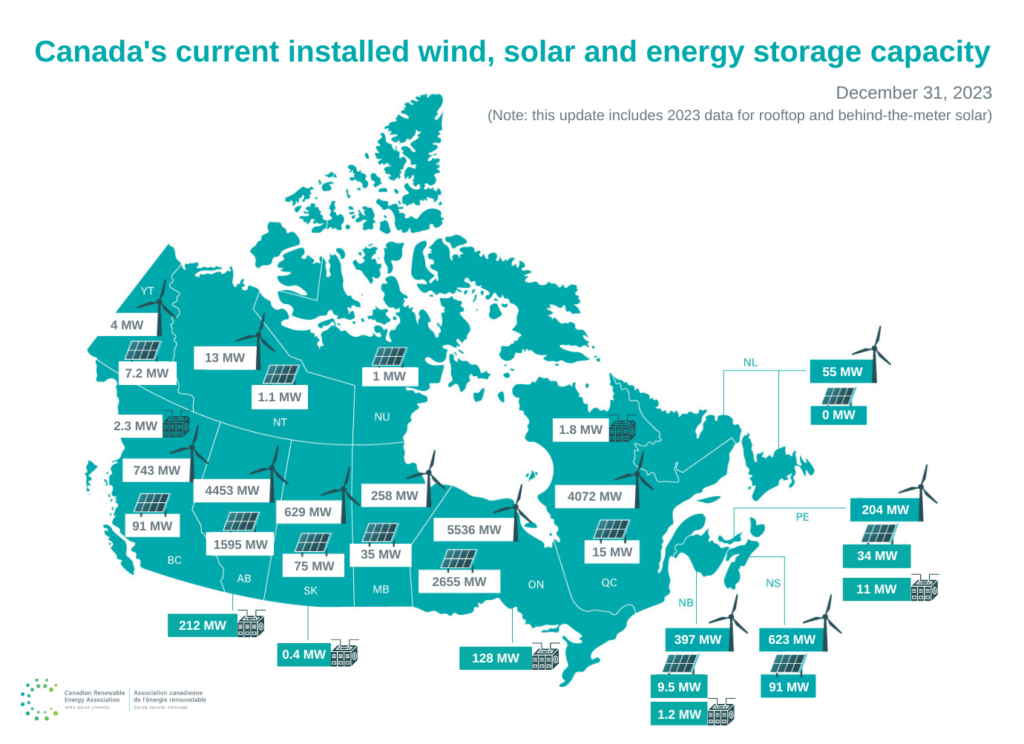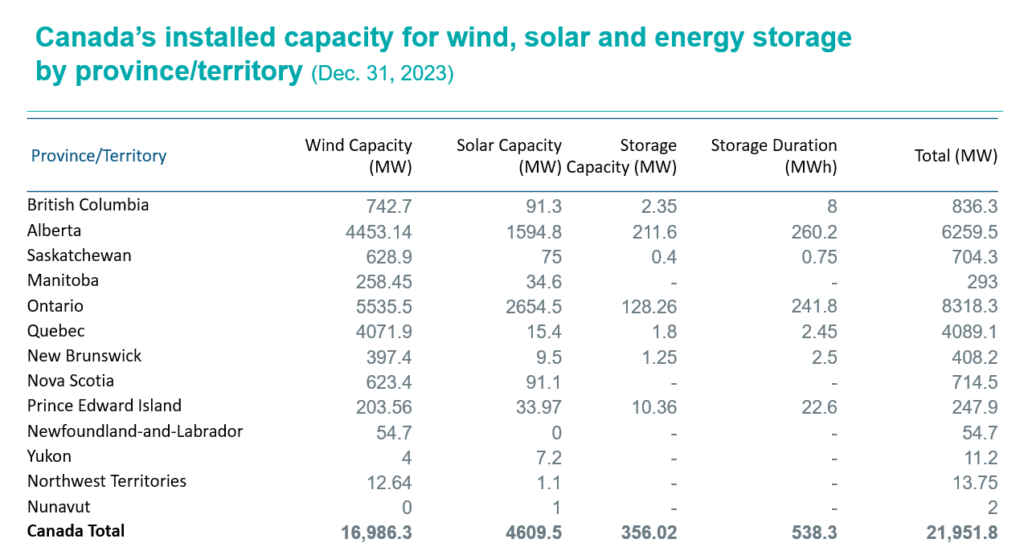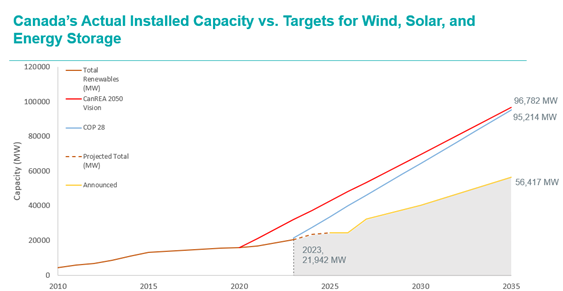
Renewables and energy storage see gradual, regional growth in Canada
February 1, 2024
By CCE
Canada’s wind, solar and energy-storage sectors grew by 11.2% over the past year, according to an annual industry data report released this week by the Ottawa-based Canadian Renewable Energy Association (CanREA).
CanREA calculates the industry added 2.3 GW of newly installed capacity in 2023, including more than 1.7 GW of utility-scale wind, nearly 360 MW of utility-scale solar, 86 MW of on-site solar and 140 MW / 190 MWh of energy storage.
As a result, Canada now has a total installed capacity of more than 21.9 GW, including 20.4 GW of utility-scale wind and solar energy, 1.2 GW of on-site (i.e. behind-the-meter) solar and 356 MW / 539 MWh of energy storage. This capacity is only expected to grow further with efforts to reach net-zero targets in 2035 and 2050.
That said, the trend has been region-specific. While the industry did well in Alberta, Yukon, Northwest Territories, New Brunswick and Prince Edward Island, other provinces saw no growth in 2023. CanREA suggests this is due to their lack of centralized procurements and corporate power purchase agreement (PPA) offerings, but further progress is still expected in those provinces and, in many cases, is already underway.
Taking all announced procurements into account, the organization finds Canada could reach nearly 58 GW of renewable energy and energy storage capacity by 2035. Even this, however, is less than will be needed to meet commitments to net-zero greenhouse gas (GHG) emissions.
“Canada has massive, untapped wind and solar resources that can be harnessed to provide affordable, clean electricity in all jurisdictions,” says CanREA president and CEO Vittoria Bellissimo. “2023 fell short of the trajectory needed to meet net-zero targets. We need to increase the pace of buildout and to see deployment in all provinces and territories.”
The sector is also an emerging force in job creation, primarily in the construction, operation and maintenance of new facilities. In 2023, CanREA reports, wind and solar accounted for more than 4,950 person-years of employment, up 11% from 2022.
Alberta accounted for 92% of Canada’s overall growth in renewables and energy-storage capacity in 2023. The province added 1.7 GW of installed capacity, up from a 1 GW increase in 2022, and now has 5.8 GW of renewable energy generation and 212 MW / 260 MWh energy storage capacity.
Wind made gains in Yukon, from 0.2 MW to 4 MW total, and in Northwest Territories, adding 3.2 MW in Inuvik. New Brunswick added 42 MW of wind, while Prince Edward Island added 31 MW of utility-scale solar and some energy storage.
Ontario’s installed capacity is still the largest in Canada, at more than 7.5 GW, but did not increase in 2023. It will soon, however, as the province invests in energy storage.


